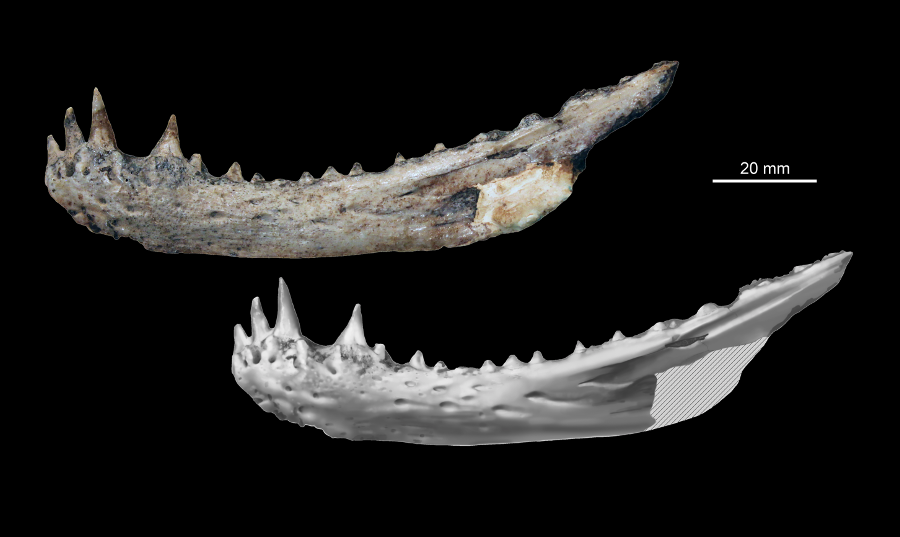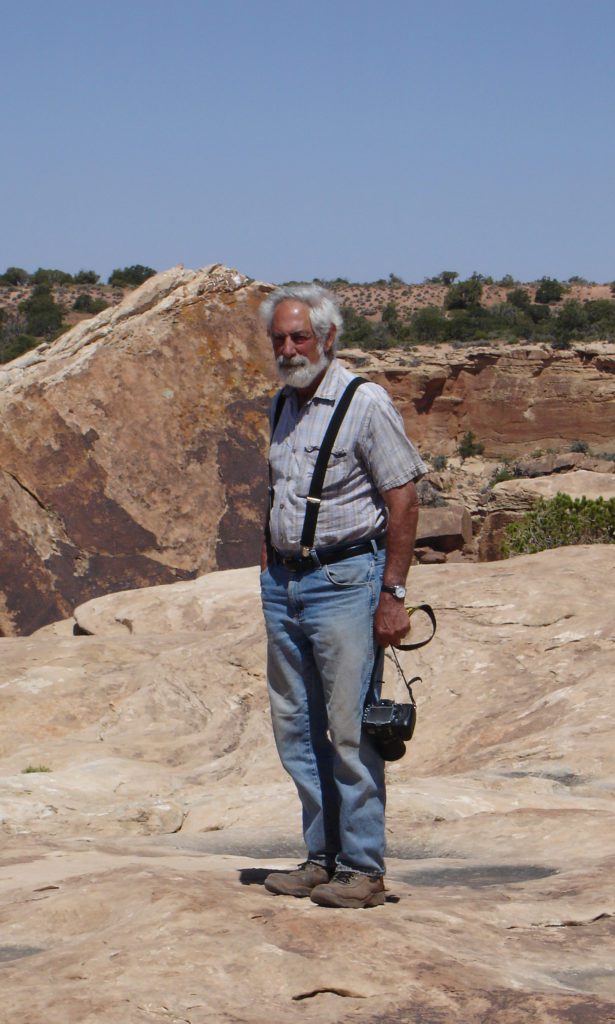Shashajaia bermani honors David S Berman, Curator Emeritus of Vertebrate Paleontology

An international team of researchers announced a new fossil species of an early mammal relative named for paleontologist Dr. David S Berman, who served as curator of Vertebrate Paleontology at Carnegie Museum of Natural History (CMNH) for 44 years. Berman, now Curator Emeritus of Vertebrate Paleontology, retired in 2014. The fossil, Shashajaia bermani, is from a bonebed co-discovered by Berman in 1989 in what is now southeastern Utah’s Bears Ears National Monument. Berman’s decades of research in southeastern Utah helped demonstrate the need for the creation of the monument in 2016. A paper on the new fossil species was recently published in Royal Society Open Science.
The name Shashajaia bermani means “Berman’s bear heart.” The genus name Shashajaia is derived from the Navajo shash (bear) and ajai (heart).
“As a pending honor it was a well-kept secret that took me by complete surprise when officially revealed,” said Berman. “From my own perspective, such recognitions are only seldom acknowledged by closest colleagues and collaborators in a leading academic journal for all to see. My sincerest thanks to all who considered my career worthy of this honor, although I must confess that I had the benefit of many talented and tireless collaborators; thanks again to them.”

“Dave’s passion for fossil hunting has inspired generations of paleontologists working in the southwestern U.S.,” said Adam Huttenlocker, lead author on the paper, “and I’m grateful for his mentorship and collegial support over the years.”
The new species of synapsid (a group of vertebrates that include mammals and their ancestors) is based on partial jaws with teeth that indicate the species is one of the oldest and most anatomically primitive members of the group Sphenacodontoidea. The group includes the mammal-like reptiles known as therapsids and the sail-backed Dimetrodon.
The research team used 2D morphometrics to quantitatively analyze tooth size and shape, inferring tooth function and diet of mammal ancestors. The Shashajaia bermani jaw fossils show that the most recent common ancestor of Dimetrodon and therapsids evolved large, canine-like teeth by the Late Carboniferous (approximately 300 million years ago). The tooth and jaw structures indicate Shashajaia bermani ambushed prey smaller than itself that it could catch and swallow with minimal struggle.
“Dave Berman has been at times my supervisor, my mentor, a colleague, and a friend during my 42-year career in the Section of Vertebrate Paleontology at Carnegie Museum of Natural History,” said Amy Henrici, Collection Manager of Vertebrate Paleontology. “I am thrilled to be part of the team honoring him with this unique fossil from Bears Ears National Monument, Utah, where Dave cut his teeth in paleontology as a graduate student in the late 1960s.”
Berman’s work with his PhD advisor Peter Vaughn in this region dates back to 1963 and helped to demonstrate the paleontological value of creating Bears Ears National Monument. Their research contributed to the following language in the 2016 Monument Proclamation 9558 under President Obama: “…research conducted in the Bears Ears area is revealing new insights into the transition of vertebrate life from reptiles to mammals and from sea to land. Numerous ray-finned fish fossils from the Permian Period have been discovered, along with other late Paleozoic Era fossils, including giant amphibians, synapsid reptiles, and important plant fossils.”
The research team that discovered and described Shashajaia bermani includes Adam Huttenlocker of the Department of Integrative Anatomical Sciences at the University of Southern California and the Section of Vertebrate Paleontology at Carnegie Museum of Natural History, Suresh Singh of the School of Earth Sciences at the University of Bristol, Amy Henrici of the Section of Vertebrate Paleontology at Carnegie Museum of Natural History, and Stuart Sumida of the Department of Biology at California State University and the Section of Vertebrate Paleontology at Carnegie Museum of Natural History.
“Our group wanted to acknowledge Dave’s seminal work both on animals from this group, as well as on animals from around the world of similar age,” said Sumida. “Perhaps as important as any of it, the makeup of the team that honored Dave demonstrates his influence on multiple generations of paleontologists.”
